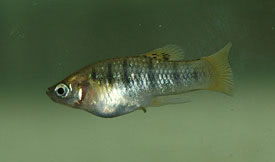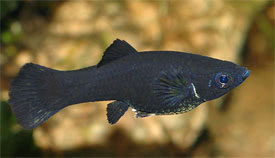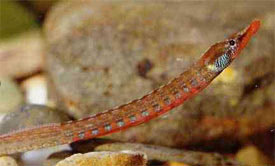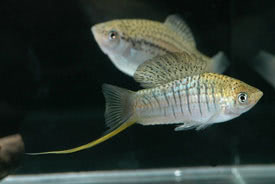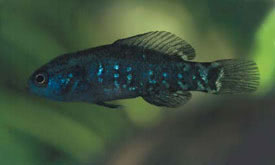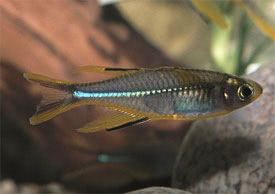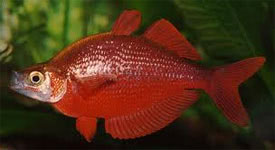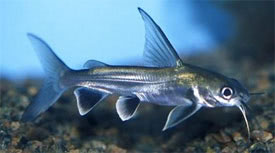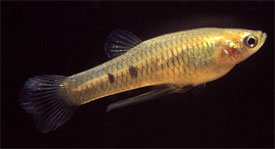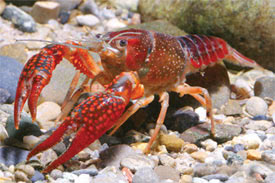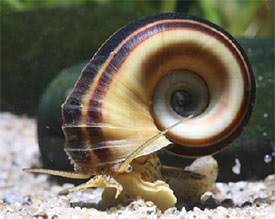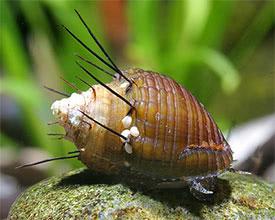
 Magyarul / Hungarian
Magyarul / Hungarian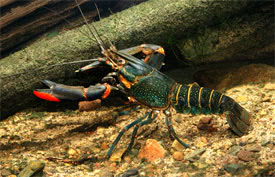
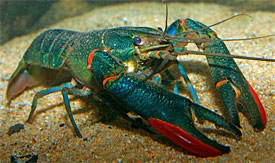
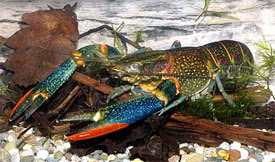

- Scientific name: Cherax quadricarinatus
- Synonyms: Astacus quadricarinatus
- Common name: Redclaw Crayfish, Blue Lobster, Australian red claw crayfish
- Group: Freshwater invertebrates
- Habitat: North-Australia, Papua New Guinea, but it has established feral populations in South Africa, Mexico, Jamaica, Puerto Rico and Zambia, where it is considered an invasive species.
- Size: 18-20 cm
- Biotope: Inhabits from shallow, clear, fast flowing creeks to the deep, still and often turbid waters, usually among aquatic vegetation that provides cover.
- Social behavior: Quite peaceful crayfish, but the females are territorial when with eggs. Fights are common, often resulting in loss of limbs, especially as the water gets warmer. It should not be kept with long finned or slow-moving fish, because the crayfish may eats them, so it is best kept in a species-only tank.
- Diet: Omnivorous; unfussy eater, it will readily accept any live and dried food (tubifex, snails, bloodworms, fish and green vegetables). Plants will be uprooted and eaten.
- Breeding: Quite easy
- Tank: Minimum 80 litres
- Population: 1 pair for 160 litres
- Decoration: Provide many hiding places such as clay pipe, rocks and hollow roots. Use sand as substarte. They do not burrow as much as other species.
- Temperature: 15-30 °C
- pH: 7.2-7.8
- Hardness: 10-30 NK°
- Lifespan: 4-5 years
Description: Redclaw Crayfish is a lobsterlike freshwater crustaceans with a thin, but tough exoskeleton that it shed during development. Identification of this species can be made by the 4 long distinct ridges on the surface of the head, hence the name Quadricarinatus. The body of Redclaw Crayfish range from dark brown to blue-green. The blue color seems to intensify when the water is clean, and be more green, or brown when left in brackish water. Redclaw Crayfish are tolerant of variations in water quality (low dissolved oxygen, water salinity, pH changes), this is why they would become a significant aquaculture species worldwide. Cherax quadricarinatus is farmed commercially in Northern Australia. They can reach up to 600 gramms. The Redclaw Crayfish will hide 2-3 days before it molts, and will not emerge from hiding until its new exoskeleton is hard, because it is very vulnerable after shedding. Young crayfish will molt 3-4 times during their first year of life, as they grow quickly, while matures will molt only once or twice a year. The shed exoskeleton as a source of calcium and is typically eaten by its owner or other crayfish.
The adult males get a distinctive red patch on the outside of their claws, which is absent on females. Females are also smaller than males. Redclaw spawn throughout the year, although there is less spawning activity in May and June. Spawning can be stimulated by rising the water temperature above 20°C. The number of eggs laid is determined by the size of the female which can be 300–800. The olive-green eggs are fertilised by the male. Fertilised eggs are carryed on the underside of the female’s tail. The eggs are hatch in approximately six weeks, and the young grow quickly. They will reach sexual maturity at one year of age.








